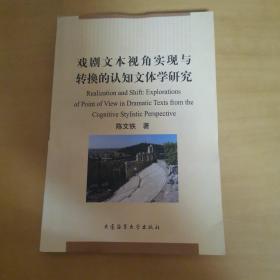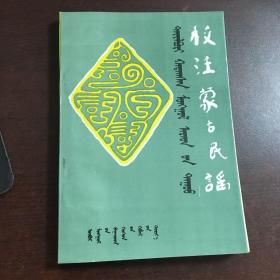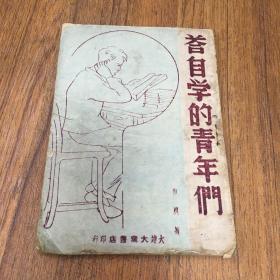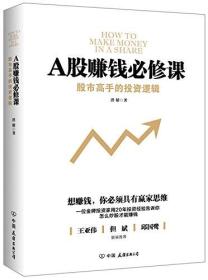
戏剧文本视角实现与转换的认知文体学研究 (英文版)
¥ 3.5 1.8折 ¥ 19 八五品
仅1件
辽宁大连
认证卖家担保交易快速发货售后保障
作者陈文铁 著
出版社大连海事大学出版社
出版时间2010-11
版次1
装帧平装
货号37~76
上书时间2023-02-27
- 店主推荐
- 最新上架
商品详情
- 品相描述:八五品
图书标准信息
- 作者 陈文铁 著
- 出版社 大连海事大学出版社
- 出版时间 2010-11
- 版次 1
- ISBN 9787563224883
- 定价 19.00元
- 装帧 平装
- 开本 32开
- 纸张 胶版纸
- 页数 280页
- 字数 232千字
- 正文语种 英语
- 【内容简介】
- “视角”是叙述学研究中富有争议的一个概念,作者将视角引入戏剧学研究领域,这是《戏剧文本视角实现与转换的认知文体学研究(英文版)》作者在学术上的一个大胆尝试与探索。作者从传统戏剧人物、戏剧中的舞台指示、戏剧中人物使用具有独特价值观念的语言来表达自己的“观点”以及戏剧通过“真实作者”或“隐含作者”、舞台提示语、人物对话等方式传达的“观点”四个方面,论证了戏剧中叙述者的存在。在此基础上,他又运用叙事学、文体学、认知语言学等基本理念,较为详尽地讲解了自己对戏剧文本中独有的“视点”、语言层面上的戏剧文本“视点”、叙述学对戏剧文本“视点”等的理解。
- 【目录】
-
Chapter1Introduction
1.1Studybackground
1.2Objectivesofthestudy
1.3Mimesisanddiegesis
1.4Furtherexplanationsofpointofviewindramatictexts
1.5Therelationbetweendramatictextandperformance
1.6Outlineofthedissertation
Chapter2LiteratureReview
2.1Introduction
2.2Workandproblemsaboutpointofviewindrama
2.2.1Groff'spointofviewindrama
2.2.2Richardson'stypologyofnarrationindrama
2.2.3Weingarten'sanalysisofLaFundacion
2.2.4McIntyre's"pointofviewindrama"
2.3Pointofviewinstagedirections
2.4Pointofviewinfilm
2.4.1Narrationinfilm
2.4.2Objectiveandsubjectiveshotsinfilm
2.5Conclusion
Chapter3Narration,NarrativeandPointofView
3.1Introduction
3.2"Narrative"and"narration"
3.2.1Fabulaandsjuzhet
3.2.2Storyanddiscourse
3.3Typesofnarration
3.3.1Uspensky'sinternalandexternalnarration
3.3.2Fowler'sclassificationofnarration
3.3.3Simpson'sdevelopmentofFowler'swork
3.4Pointofviewinprosefiction
3.4.1Genette'sfocalization
3.4.2Balandother'scritiqueofGenette'sfocalization
3.4.3Uspensky'sfourplanesofpointofview
3.4.3.1Pointofviewonthespatialandtemporalplane
3.4.3.2Pointofviewontheideologicalplane
3.4.3.3Pointofviewonthephraseologicalplane
3.4.3.4Pointofviewontheplaneofpsychology
3.4.4Fowler'smodificationsofUspensky'sclassification
3.4.5Chatman'sworkonpointofview
3.4.5.1Slantandfilter
3.4.5.2Centerandinterest-focus
3.4.5.3Perceptualandconceptualpointofview
3.5Checklistoflinguisticindicatorsofpointofview
3.5.1Schema-orientedlanguage
3.5.2Value-ladenlanguage
3.5.3Giveninformationvsnewinformation
3.5.4Deixis
3.5.5Representationsofthoughtandperception
3.5.6Psychologicalsequencing
3.5.7Graphology
3.5.8Presupposition
3.5.9Grice'scooperativeprinciple
3.6Conclusion
Chapter4Deieticshiftstheoryandpointofview
4.1Intrduction
4.2Deicticshifttheory
4.3Thedefinitionofthedeicticcenter
4.4Categoriesofdeixis
4.4.1Spatialdeixis
4.4.2Temporaldeixis
4.4.3Persondeixis
4.4.4Socialdeixis
4.4.5Empatheticdeixis
4.5Galbraith'sdeicticshifttheory
4.5.1Deicticfields
4.5.2PUSHesandPOPs
4.5.3Edgework
4.5.4Deicticdecay
4.5.5MoretheoriesofPUSHesandPOPs
4.6Emmott'scontextualframetheory
4.7Improvedversionofdeicticshifttheory
4.8Conclusion
Chapter5Possible-worldstheoryandpointofview
5.1Introduction
5.2Thepossible-worldstheory
5.2.1Possibleworldsandthesemanticsoffiction
5.2.2Possibleworldsandnarrativesemantics
5.2.3Inadequacyoftruthconditionalsemantics
5.2.4Ryan'stypologyofpossibleworlds
5.3Alternativepossibleworlds
5.3.1Fantasyuniverses
5.3.2ThePrincipleofminimaldeparture
5.4Deicticshiftsandpossibleworlds
5.4.1Recentering
5.4.2Increasinganddecreasingtheprominenceof
possibleworlds
5.4.3DeicticshiftandpossibleworldsinMissCooper
5.5Conclusion
Chapter6Mindstyleandpointofview
6.1Introduction
6.2Studiesofmindstyle
6.3LeechandShort'sdiscussionofmindstyle
6.3.1Linguisticchoicesandmindstyle
6.3.2Threeusual/unusualmindstyles
6.4Logicandmindstyle
6.5Paradigmsofrealityandmindstyle
6.6Conclusion
Chapter7Conclusion
7.1Summary
7.2Concludingremarks
Bibliography
后记
点击展开
点击收起
— 没有更多了 —
























以下为对购买帮助不大的评价